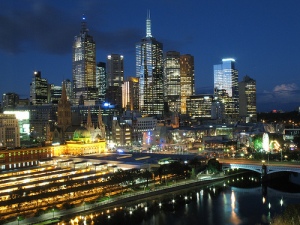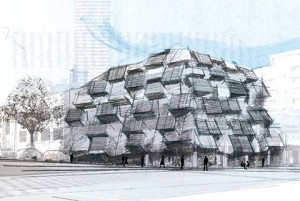Highspeed Rail – Melbourne to Sydney
Which air routes do you think would be amongst the busiest in the world? London to Paris? NYC to LA? Atlanta (world’s busiest airport) to Philadelphia? Nope, wrong. It’s Sydney to Melbourne in Australia with 950 flights per week, beaten only by Barcelona to Madrid and Sao Paulo to Rio de Janeiro. Interestingly, Sydney to Brisbane is only slightly further down the list in 9th place with 590 flights per week. This is impressive for a country with a total population of only 20 million people but can be largely explained by geography. Australia is a country of vast distances with the population almost entirely focussed on 5 major cities around the circumference.
Wikipedia states that “The busiest air routes in the world appear to involve pairs of large cities in close proximity, but which rely more on air transport due to a lack of viable transport infrastructure for other modes, and the distance is large enough to discourage car driving.”
Well Melbourne and Sydney are certainly too far apart for driving on any regular basis. Not only is it a good 10 hour drive but there is next to nothing in between, such is the nature of the Australian Outback. So, you might think, at least you would be able to drive fast given the emptiness of the surroundings and the straightness of the highways? Ah no, not recommended. The speed limit of 100 or occasionally 110kph is rigorously enforced and penalties are harsh.
Both cities are certainly large at between 4 and 5 million people each and there is an enormous amount of interaction between them, both business and tourist. This explains why 9 million people made the trip in 2009 and why that number is expected to rise 70% by 2020. The populations of both cities and Australia as a whole are predicted to increase dramatically in the next couple of decades.
As for the lack of viable public transport… well, you can take a train but it takes about 11 hours and stops dozens of times. Or a bus. Which isn’t any quicker. Needless to say those options aren’t very popular when the flying time is only 1 hour.
But what is wrong with flying you might ask? You’re kidding right? Setting aside the environmental impact (shifting most passengers on the route from air to rail would save at least 1 million tonnes of greenhouse gases a year), flying has become a harried, stressful, and often-times, inconvenient means of transportation. Anyone who thinks otherwise is obviously glancing nostalgically back to aviation’s romantic past, not the present (or they can afford to fly business class…). A quick analysis of the benefits of high-speed rail over flying is needed:
- Melbourne & Sydney airports are far outside their city centres. In Sydney this means an expensive taxi ride or metro ride. In Melbourne it’s an expensive taxi ride or a cheaper but still not inexpensive bus ride. Due to the lack of foresight of the Kennett government there isn’t, and likely never will be, a train link to the airport. High-speed rail as experienced in cities like London or Paris on the other hand, will take you directly into the heart of the city. No need for a separate transfer.
- Long queues to check in at airports, generally not at train stations.
- Long queues at security. There often isn’t any security for trains or it’s a lot less stringent.
- Don’t forget to remove your laptop from your bag at the airport. Not at the train station.
- You need to be at the airport early to guarantee you can check in, go through security, and make it to the gate lounge in time to wait the obligatory half hour or so. In my experience with high-speed rail in Europe it has been more of a case of turning up and getting on the train, usually not earlier than half an hour before departure.
- On a train you can leave your electronics turned on all the time including your mobile phone.
- You have more room on a train than you do in economy class on a plane and more freedom to move around.
- Trains cannot be delayed by fog, volcanic ash or other weather-related events (except fluffy snow – I’m looking at you Eurostar).
- Travelling by train you can watch the scenery out the window as it whizzes by. From an aeroplane you aren’t likely to see much at all.
- And, for most travellers, the most important aspect is the time taken, probably the reason not many people endure the current 11 hour trip. In Europe, Japan and China journeys of up to 800kms city centre to city centre are faster than air travel. Up to 1,000kms remain competitive. It’s 713kms as the crow flies between Melbourne and Sydney.
The reasons for travelling by high-speed train instead of flying seem compelling so why hasn’t the infrastructure already been built? Obviously this would require a sizeable investment in infrastructure, around $15 billion for the line and the initial trains based on the French experience. But even at this cost a one-way economy fare of less than $150 and a business class fare of less than $300 should be possible. This compares very favourably with airfares, particularly when you take into account taxi rides to the airport or the cost of parking your car there.
Based on existing train technology a centre to centre journey time of less than 3 hours is possible. This could certainly not be matched by flying. And a single train can carry 900 passengers compared to around 160 passengers in a typical short-haul jet such as a Boeing 737. High-speed rail lines can safely accommodate 1 train in each direction every 15 minutes. So there is ample capacity for present and future demand.
In other cases where cities have been connected by high-speed rail the air services have virtually disappeared which demonstrates that passengers really prefer the hassle-free, point-to-point nature of rail travel. For example, since the Eurostar between Paris and London opened more than 70% of travel between them is by train, even though Heathrow is a European airline hub. So this is certainly a case of “build it and they will come”. All we need to do now is find the political will to make it happen.
Source article: http://www.theage.com.au/opinion/society-and-culture/very-fast-rail-travel-figures-add-up-20100521-w1n2.html






